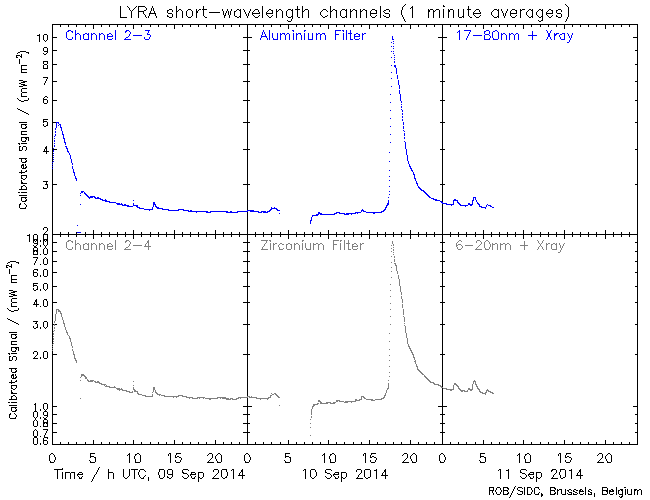Update on yesterday’s solar flare and associated coronal mass ejection from Juha-Pekka Luntama, responsible for space weather at ESA’s Space Situational Awareness Programme office at ESOC, darmstadt, Germany.
A strong solar flare (X1.6) took place at 19:45 CEST yesterday afternoon. This flare was detected by several spacecraft, including Proba-2 instruments and the GOES solar X-ray flux monitors. Based on the SOHO coronagraph images, this flare was associated with a Coronal Mass Ejection (CME) that is aimed towards the Earth. The expected arrival time of the CME is at 23:00 CEST (+/- 12 hours) on 12 September (tomorrow).
The arrival of the CME is expected to cause strong to severe geomagnetic storms. However, the severity of the geomagnetic storm will depend on the orientation of the magnetic field of the plasma within the CME. This we will not know before the CME has passed the Sun-Earth L1 Lagrange point and we have in-situ observations from the ACE spacecraft available. This information will be available less than one hour before the impact.
Starting around 23:00 CEST on 10 September, a gradual increase in the solar proton flux was observed by particle spectrometers on board GOES satellites. The flux is currently above the event threshold near 30 pfu. This is only a minor radiation event with limited consequences for high-frequency radio communication in the polar regions.
Jussi adds:
Note that the arrival of the CME is forecast for tomorrow evening at 23:00, with uncertainty of several hours. If the forecast is correct, the CME will arrive to L1 after 22:00 tomorrow and then we will know much better from the ACE in-situ measurements how strong the geomagnetic storm will be.




Discussion: 2 comments
Thanks for the info. It’s so nice to be able to be “on time” observing and understanding changes in Nature.
thank you for this, it makes me happy.